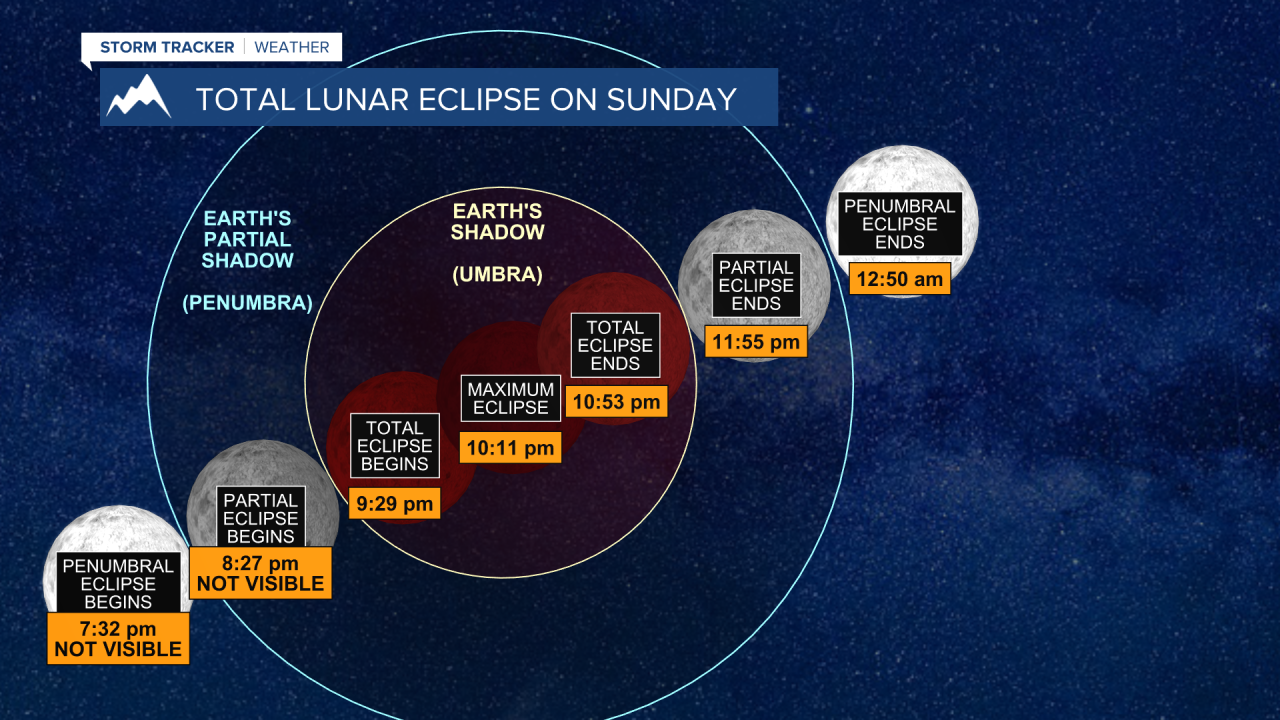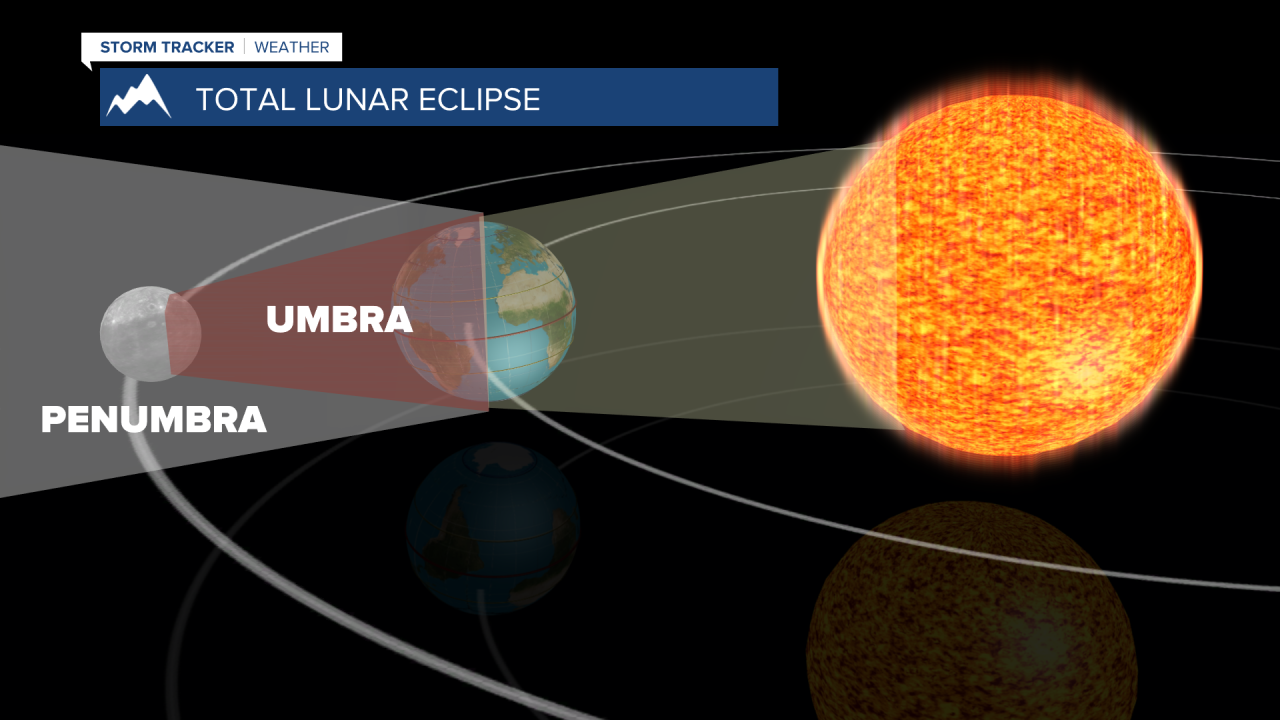Sunday evening will bring Montanans a great chance to see a total lunar eclipse at a reasonable hour! On May 15th, 2022, starting at 9:29 PM we will be able to see the total eclipse in its entirety across southwest Montana.
The timing isn’t ideal to watch the eclipse in its entirety though. The eclipse really begins at 7:32 PM on Sunday, but the moon won’t rise until 8:40 PM in western Montana, but the full eclipse and the partial eclipse will be. The full eclipse will end at 12:50 AM on Monday. It seems that the bulk of lunar eclipses is less than ideal to get the kids out of bed to see. This one isn’t a stretch for most of us. This eclipse will be the longest prime-time lunar eclipse on the west coast in the United States of the century.

A LITTLE ABOUT LUNAR ECLIPSES
To see a total lunar eclipse happens when the planets – er, well the Earth, Sun, and moon align. The astronomical term for this is known as syzygy (don’t try to pronounce it) which comes from the Greek word that means being paired together. The sun provides the light, which the Earth shields from the moon as it orbits our planet. There are several phases. The full shadow is known as the umbra, which is considered a full eclipse. The partial shadow is known as the penumbra, or the outer part of the eclipse which provides a partial shadow from the Earth to the moon.

Here are a couple of facts about total lunar eclipses. First, it must be a full moon to see an eclipse. That’s it. That is the only time that a total lunar eclipse is visible. The moon, sun and the Earth must be in perfect alignment. The Earth must be between the Sun and the moon.
The moon is still visible in most cases, but it looks red, also known as a blood moon (because of the reddish tint the moon takes). While the Earth blocks the sunlight from directly hitting the surface of the moon, some light still reaches the surface of the moon because the Earth’s atmosphere still bends the sunlight toward the moon’s surface.
A total lunar eclipse is relatively rare. About 30% of all lunar eclipses are total lunar eclipses. We can see, on average, a total lunar eclipse every 2.5 years. Our next total lunar eclipse though happens again this year on November 7-8. After that, we must wait until March 13th of 2025 (again, a year where we will see two lunar eclipses in the same calendar year).
As the forecast stands right now, we should be able to see at least part of the eclipse. Rain or snow potential is low Sunday night, but there will be some clouds in the region. Eastern Montana will have the toughest time seeing the eclipse as we will have a bank of clouds blanketing the sky in the eastern plains.



